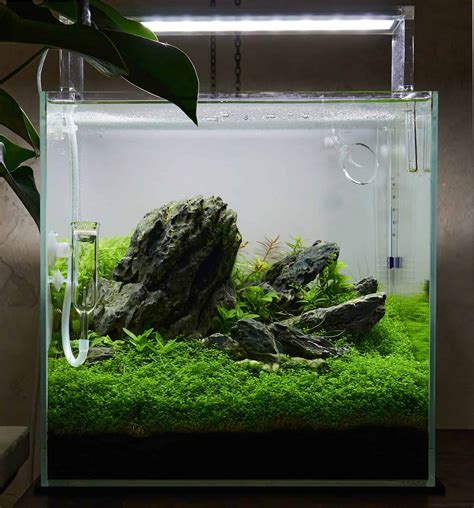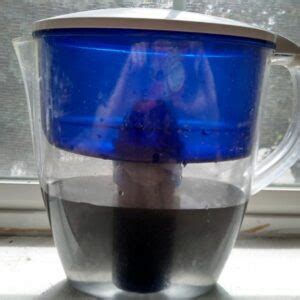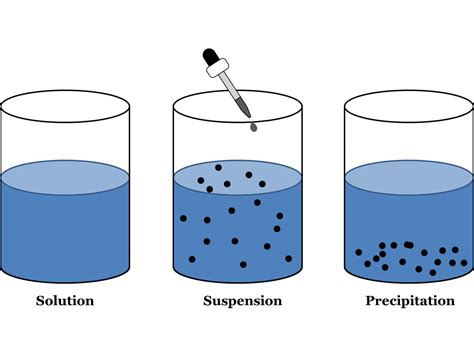When it comes to maintaining a healthy and vibrant aquarium, one of the most common challenges that aquarium owners face is the issue of cloudy or murky water. This can be quite frustrating, as it not only hampers the visibility of your beautiful fish but also indicates an imbalance in the aquatic ecosystem. It is important to identify the underlying causes and take appropriate measures to restore clear and pristine water quality.
Cloudy water in your fish tank can be caused by various factors, ranging from biological imbalances to poor maintenance practices. Factors such as overfeeding, excess organic matter, inadequate filtration, and improper water cycling can contribute to the cloudiness. Understanding the root cause is crucial in order to implement the most effective solutions. It is essential to recognize that each aquarium is unique, with its own specific set of environmental conditions, making it important to find tailored solutions that work for your specific situation.
One common cause of murky water is an overabundance of organic matter, including uneaten food, fish waste, and decaying plant matter. This excess organic material can create a breeding ground for bacteria and other microorganisms, which consequently releases cloudiness-causing particles into the water. Additionally, inadequate filtration can further exacerbate the problem by failing to remove these particles effectively, leading to a buildup of debris and sediment. Maintaining a proper balance between feeding your fish and ensuring efficient filtration will go a long way in preventing murky water.
Causes and Solutions for Cloudy Water in Your Fish Tank

In this section, we will discuss the significant role that overfeeding and poor water quality play in causing cloudy water in your aquarium. Understanding how these factors can impact the water clarity is essential for maintaining a healthy aquatic environment for your fish.
Overfeeding is a common mistake made by many aquarium owners. It occurs when you provide your fish with excessive amounts of food, leading to uneaten food sinking to the bottom of the tank. This leftover food decomposes and becomes a breeding ground for harmful bacteria and other microorganisms, causing the water to become cloudy.
Poor water quality is another major contributor to cloudy water in fish tanks. This can be caused by various factors, including ineffective filtration systems, inadequate water changes, accumulation of waste and debris, and imbalanced or excessive chemical additives.
- Ensure you feed your fish in moderation and only provide the amount of food they can consume within a few minutes. Remove any uneaten food to prevent it from decomposing and polluting the water.
- Maintain a proper filtration system that adequately removes debris, waste, and impurities from the water. Regularly clean or replace filter media as recommended by the manufacturer.
- Perform routine water changes to eliminate accumulated toxins and maintain optimal water quality. Aim to change approximately 10-20% of the tank water every week, using a water conditioner to remove chlorine and chloramine.
- Monitor water parameters such as pH levels, ammonia, nitrite, and nitrate concentrations, and take appropriate actions to correct any imbalances. Use test kits to regularly check these parameters.
- Avoid using excessive chemical additives or medications unless specifically required. Overuse of these substances can disrupt the natural balance of the aquarium ecosystem and contribute to murky water.
By addressing overfeeding and poor water quality, you can significantly reduce the occurrence of cloudy water in your aquarium. Implementing proper feeding habits, maintaining a clean and efficient filtration system, performing regular water changes, and monitoring water parameters will help create a clear and healthy environment for your fish to thrive.
Excessive Algae Growth
One common issue that aquarium owners often face is the excessive growth of algae in their tanks. This overgrowth of algae can cause the water in the aquarium to become murky and reduce the overall health and appearance of the aquatic environment. Understanding the causes of excessive algae growth and implementing effective solutions is crucial in maintaining a clean and vibrant aquarium ecosystem.
Algae is a type of aquatic plant that thrives in the presence of certain conditions, such as high levels of nutrients, sunlight, and carbon dioxide. When these conditions are abundant in an aquarium, it can create a perfect environment for algae to grow rapidly. Excessive algae growth not only obscures the view of the fish and plants in the aquarium but can also lead to a depletion of oxygen in the water, which can be harmful to the aquatic life.
- Nutrient Imbalance: A common cause of excessive algae growth is an imbalance of nutrients in the aquarium water. The excess presence of nitrogen and phosphates, often stemming from overfeeding, decaying organic matter, or inadequate filtration, can fuel the growth of algae.
- Lighting: Providing excessive or prolonged exposure to light can also contribute to the growth of algae. Poorly positioned aquariums near windows or with inadequate lighting control allow sunlight to penetrate the water, promoting the growth of algae. Implementing timed and controlled lighting systems can help regulate the amount of light the aquarium receives.
- Carbon Dioxide Levels: Algae thrive in environments with high carbon dioxide (CO2) levels. Insufficient circulation and lack of aeration can lead to increased levels of CO2, encouraging algae growth. Proper water circulation and aeration systems can help maintain suitable CO2 levels in the aquarium.
- Presence of Fish Waste: Fish produce waste in the form of uneaten food, excrement, and metabolic byproducts. If not promptly removed through regular maintenance practices such as water changes and efficient filtration, fish waste can serve as a source of nutrients for algae growth.
To effectively address the issue of excessive algae growth, aquarists can employ various solutions. Implementing a balanced feeding regime, ensuring proper filtration and regular water changes, and monitoring nutrient levels are effective ways to control algae growth. Utilizing algae-eating fish and other aquatic animals, such as snails or shrimp, can also help keep algae growth in check. Additionally, introducing live plants can compete with algae for nutrients and help inhibit their growth. Maintaining a healthy and balanced aquatic environment is vital in preventing and treating excessive algae growth in aquariums.
Improper Filtration System

Inadequate filtration could be one of the main factors contributing to the cloudiness of the water in your aquarium. The filtration system plays a crucial role in maintaining the water quality, clarity, and overall health of your aquatic environment. Without an efficient and properly functioning filtration system, impurities, debris, and waste particles can accumulate, causing the water to become turbid and unpleasant.
Insufficient Filtration Capacity: If you notice that your aquarium water is consistently murky, it could be due to a filtration system that is not capable of efficiently handling the volume of your tank. A small or low-quality filter may struggle to remove the suspended particles and organics within the water, resulting in poor water clarity.
Incorrect Filtration Setup: Another possible cause of cloudy water is an improperly set-up filtration system. Make sure that the various filtration components, such as the mechanical, chemical, and biological filtration elements, are correctly arranged and fitted in your aquarium. Each filtration component has a specific function and plays a role in maintaining water clarity.
Lack of Regular Maintenance: Failure to regularly clean and maintain your filtration system can also contribute to murky water. Over time, organic matter and debris can accumulate within the filter media, diminishing its effectiveness in keeping the water clean. It is essential to regularly clean or replace filter media and perform routine maintenance tasks to ensure optimal filtration efficiency.
Poor Quality Filter Media: The quality of the filter media used in your filtration system is crucial. If inferior or low-quality filter media are used, they may not be able to effectively trap and remove impurities from the water, leading to persistent cloudiness. Invest in good-quality filter media that suits the specific needs of your aquarium.
Overall, an improper filtration system can have a significant impact on the clarity and quality of the water in your aquarium. It is important to invest in a suitable filtration system, ensure correct setup and regular maintenance, and use high-quality filter media to promote a healthy and clear aquatic environment for your fish and other inhabitants.
Lack of Regular Water Changes
One of the factors that can contribute to the cloudiness of the water in your aquarium is the lack of regular water changes. Neglecting to change the water in your tank can lead to a buildup of waste, debris, and harmful substances that can cloud the water and negatively impact the health of your fish and other aquatic organisms.
Regular water changes are essential for maintaining the cleanliness and clarity of your aquarium. They help remove excess waste, uneaten food, and other substances that can decompose and pollute the water. Additionally, regular water changes replenish important minerals and nutrients that are essential for the well-being of your aquatic community.
| Reasons for lack of regular water changes: |
| 1. Forgetfulness or lack of awareness about the importance of water changes. |
| 2. Fear of stressing or harming the fish during the water change process. |
| 3. Lack of proper equipment or knowledge on how to perform a water change. |
| 4. Busy schedule or lack of time to dedicate to aquarium maintenance. |
To prevent the water in your aquarium from becoming murky due to a lack of regular water changes, it is crucial to establish and follow a consistent water change schedule. This schedule will depend on the size of your tank, the number of fish, and the filtration system in place. Research and seek advice from experts or experienced aquarium hobbyists to determine the appropriate frequency and volume of water changes for your specific setup.
Investing in quality filtration systems and equipment can also help maintain water clarity and reduce the frequency of water changes. Filters remove physical and chemical impurities from the water, keeping it clean and clear for your aquatic inhabitants. However, even with a reliable filtration system, regular water changes are still necessary to provide optimal conditions for your aquarium's inhabitants.
Remember, preventive measures such as regular water changes are key in ensuring a healthy and vibrant aquatic environment. By staying diligent and proactive in maintaining your aquarium's water quality, you can enjoy a beautifully clear and thriving underwater world.
Presence of Suspended Particles

The issue of cloudy water in your aquarium can often be attributed to the presence of suspended particles. These tiny particles can be various substances that are suspended in the water column, making the water appear murky or unclear. Identifying and addressing the factors contributing to the presence of suspended particles is crucial for maintaining a healthy and visually pleasing aquatic environment.
When your aquarium water has suspended particles, it can hinder the clarity of the water, making it difficult to see your fish and other aquatic inhabitants. Additionally, these particles can negatively impact the overall water quality, potentially leading to health issues for your aquatic pets.
Sources of suspended particles
There are several potential sources of suspended particles in an aquarium, ranging from organic matter to inorganic substances. Organic matter, such as uneaten food, fish waste, and decaying plant material, can contribute to the cloudiness of the water. Inorganic particles, such as sand or gravel dust, can also become suspended in the water column, particularly during water changes or substrate disturbances.
Effects on aquatic life
The presence of suspended particles in the water can negatively impact the health and well-being of your aquarium inhabitants. Fish may become stressed or exhibit signs of respiratory distress when the water quality deteriorates due to high particle levels. Additionally, suspended particles can clog the gills of fish and hinder their ability to breathe properly, leading to further complications.
Preventing and addressing suspended particles
To prevent and address the issue of suspended particles, it is important to establish proper aquarium maintenance routines. Regular water changes, careful feeding practices, and proper filtration can help reduce the accumulation of organic matter and inorganic particles in the water. Mechanical filtration systems, such as sponge filters or filter floss, can also be effective in capturing suspended particles and improving water clarity.
By maintaining a clean and well-maintained aquarium, you can minimize the presence of suspended particles and provide your aquatic pets with a clear and healthy living environment.
Inadequate Tank Maintenance
Ensuring that your aquarium remains clean and clear requires diligent attention and regular maintenance. Neglecting this essential aspect can lead to the development of murky water. In this section, we will explore the consequences of inadequate tank maintenance and the necessary steps to prevent and rectify this issue.
Lack of proper cleaning
One of the primary causes of murky water is the failure to establish a routine cleaning schedule. When the tank's filter, substrate, and decorations are not properly cleaned, debris and waste accumulate, resulting in cloudy water. Furthermore, the uneaten food and decaying organic matter release excess nutrients into the water, fostering the growth of algae and other harmful bacteria.
Solution: Implement a regular cleaning schedule that includes vacuuming the substrate, removing debris from the tank, and cleaning the filter. This will help maintain water clarity and minimize the accumulation of organic waste.
Inadequate water changes
Another common mistake is inadequate water changes, which lead to the buildup of harmful substances and pollutants in the aquarium. Without regular partial water changes, the concentration of nitrates, phosphates, and other dissolved compounds increases, contributing to the cloudiness of water.
Solution: Perform regular water changes, replacing a portion of the aquarium water with fresh, treated water. This helps remove accumulated toxins and replenish essential minerals, promoting a healthy and clear environment for your aquatic pets.
Overstocking and overfeeding
Maintaining an appropriate population of fish and avoiding overfeeding are crucial factors in preventing water cloudiness. Overstocking an aquarium can overwhelm the filtration system, impairing its ability to keep the water clean. Similarly, overfeeding leads to an excess of uneaten food, which decomposes and contributes to poor water quality.
Solution: Research the specific requirements of your fish species and ensure you are providing them with adequate living space. Feed your fish in moderation, only what they can consume within a few minutes. This will prevent excessive waste and minimize the chances of murky water.
By addressing the issue of inadequate tank maintenance and taking the necessary preventative measures, you can ensure that your aquarium remains a clear and healthy environment for your aquatic pets to thrive in.
FAQ
What are the common causes of murky water in an aquarium?
The common causes of murky water in an aquarium include overfeeding, overstocking of fish, inadequate filtration, and poor water quality. These factors can lead to an accumulation of organic waste, uneaten food, and excessive bacteria growth, resulting in cloudy or murky water.
How can overfeeding contribute to murky water in an aquarium?
Overfeeding in an aquarium can contribute to murky water as excessive fish food that is not consumed gets broken down by bacteria. The decaying food releases waste and toxins into the water, resulting in cloudiness. It is important to feed fish in moderation and remove any uneaten food promptly.
What steps can I take to solve the problem of cloudy water in my aquarium?
To solve cloudy water in your aquarium, you can take several steps. Firstly, perform regular water changes to improve water quality. Secondly, ensure that the aquarium is not overstocked and that the filtration system is adequate for the tank size. Additionally, avoid overfeeding your fish and clean the gravel or substrate regularly to remove excess organic waste.
Can poor water quality be the sole cause of murky water in an aquarium?
Poor water quality can be a significant contributor to murky water in an aquarium. It can be caused by imbalanced pH levels, high ammonia or nitrate levels, or improper filtration. It is crucial to test and maintain proper water parameters to ensure a healthy and clear environment for your fish.




